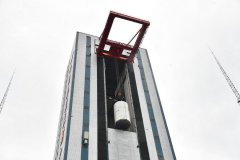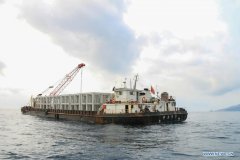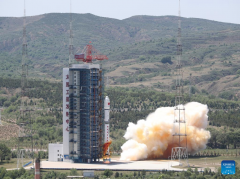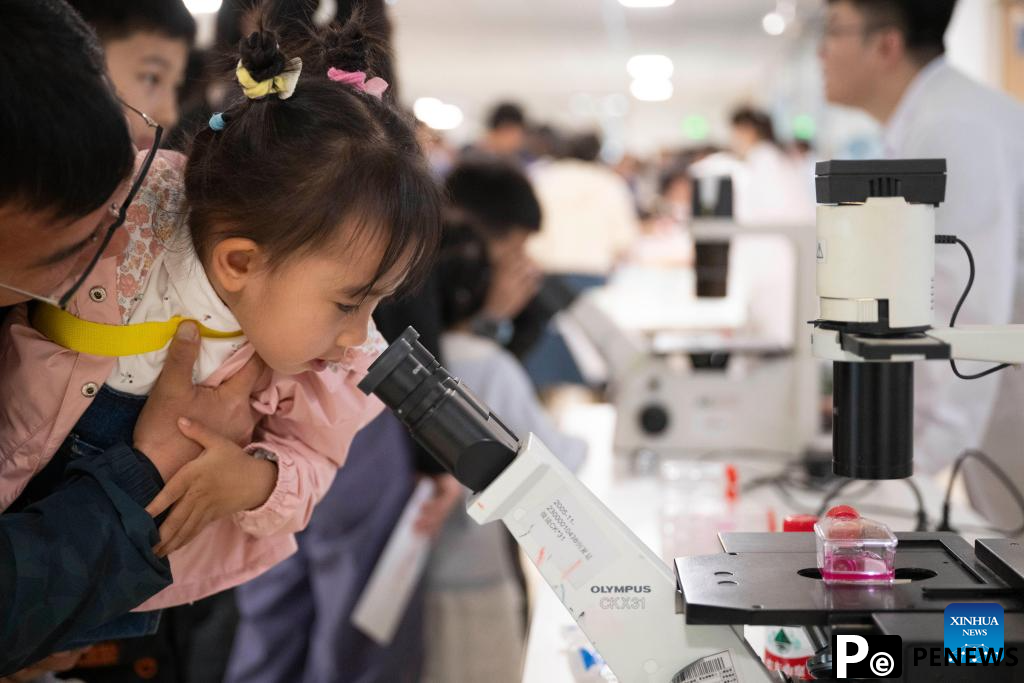Home>>
China launches Tianwen-2 to retrieve asteroid samples(Xinhua) 08:23, May 29, 2025
XICHANG, May 29 (Xinhua) -- China launched its first asteroid sample-return mission, Tianwen-2, in the early hours of Thursday, an endeavour to shed light on the formation and evolution of asteroids and the early solar system.
The Tianwen-2 mission aims to achieve multiple goals over a decade-long expedition: collecting samples from the near-Earth asteroid 2016HO3 and exploring the main-belt comet 311P, which is more distant than Mars.
A Long March-3B carrier rocket blasted off from the Xichang Satellite Launch Center in southwest China's Sichuan Province at 1:31 a.m. (Beijing Time). And about 18 minutes later, the Tianwen-2 probe was sent into a transfer orbit from Earth to the asteroid 2016HO3, according to the China National Space Administration (CNSA).
The spacecraft unfolded its solar panels smoothly, and the CNSA declared the launch a success.
Shan Zhongde, head of the CNSA, stated that the Tianwen-2 mission represents a significant step in China's new journey of interplanetary exploration.
Despite the mission's long duration and significant risks, he expressed his expectation of yielding groundbreaking discoveries and expanding humanity's knowledge of the cosmos.
POTENTIAL SCIENTIFIC BREAKTHROUGHS
Known as a quasi-satellite of Earth, asteroid 2016HO3 orbits the Sun and appears to circle around Earth as well, remaining a constant companion to our planet.
Dubbed as "cosmic fossils," asteroids preserve critical information about the solar system's infancy, scientists say.
"Asteroids also provide critical insights into Earth's evolutionary history. A hypothesis holds that Earth's water was brought by small celestial bodies. Their cataclysmic collisions with our planet, such as the event that eradicated dinosaurs, have profoundly shaped terrestrial evolution," said Liu Jianjun, deputy chief designer of the Tianwen-2 mission and a researcher from the National Astronomical Observatories of the Chinese Academy of Sciences.
The second target, 311P, a celestial anomaly discovered in the main asteroid belt between Mars and Jupiter, occasionally spews out materials and resembles a comet with tails. Its discovery challenges astronomers' conventional understanding about a comet, as the region is too close to the Sun for a comet to retain its volatile materials like water ice.
Scientists are still uncertain whether main-belt comets originated in the asteroid belt or from the edge of the solar system. These special small celestial bodies hold significant scientific research value, Liu said.
Explaining why the asteroid 2016HO3 was chosen for sampling, Han Siyuan, deputy director of the CNSA's Lunar Exploration and Space Engineering Center and spokesperson for the Tianwen-2 mission, said this asteroid has a relatively stable orbit, requiring lower energy consumption for spacecraft to reach it, while enabling a viable scenario for subsequent exploration of the main-belt comet 311P.
The Tianwen-2 mission is expected to advance understanding of the origins, evolution and characteristics of these two types of small celestial bodies, Han said.
Scientifically, the mission focuses on measuring physical parameters of the two celestial targets, including their orbital dynamics, rotation, size, shape and thermal properties.
The mission will also investigate the topography, composition and internal structure of the two celestial bodies, and possibly study the materials ejected by the main-belt comet, Han said.
After the samples are brought back to Earth, laboratory analysis will be carried out to determine the samples' physical properties, chemical and mineral composition and structural characteristics, he added.
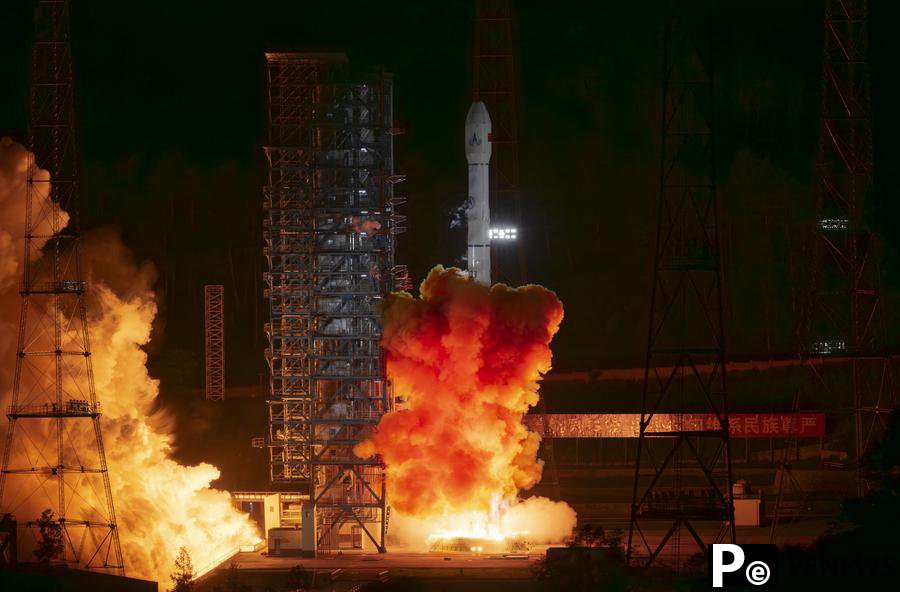
China's Tianwen-2 probe, atop a Long March-3B carrier rocket, lifts off from the Xichang Satellite Launch Center in southwest China's Sichuan Province, May 29, 2025. China launched its first asteroid sample-return mission, Tianwen-2, in the early hours of Thursday, an endeavour to shed light on the formation and evolution of asteroids and the early solar system. (Xinhua/Cai Yang)
NEW STEP IN DEEP SPACE
The entire mission process is complex. After launch, the spacecraft will journey for about one year to reach its first target, during which it will perform deep-space maneuvers and mid-course corrections until it is about 30,000 km away from 2016HO3.
The probe will gradually approach the target, carrying out close exploration by circling and hovering over the asteroid to determine the sampling area, with a strategy of flying and probing simultaneously.
Given the asteroid's weak gravity, sampling poses unique challenges. A hard surface may result in bouncing back, while a loose surface may cause sinking. The control of the probe must be precise and just right, Han said.
After completing the sampling, the spacecraft will fly back to the vicinity of Earth. A return capsule will separate from the main probe and is expected to deliver the samples to Earth by the end of 2027.
The main probe will then continue its voyage to rendezvous with the more distant target, the main-belt comet 311P, to carry out subsequent exploration tasks.

